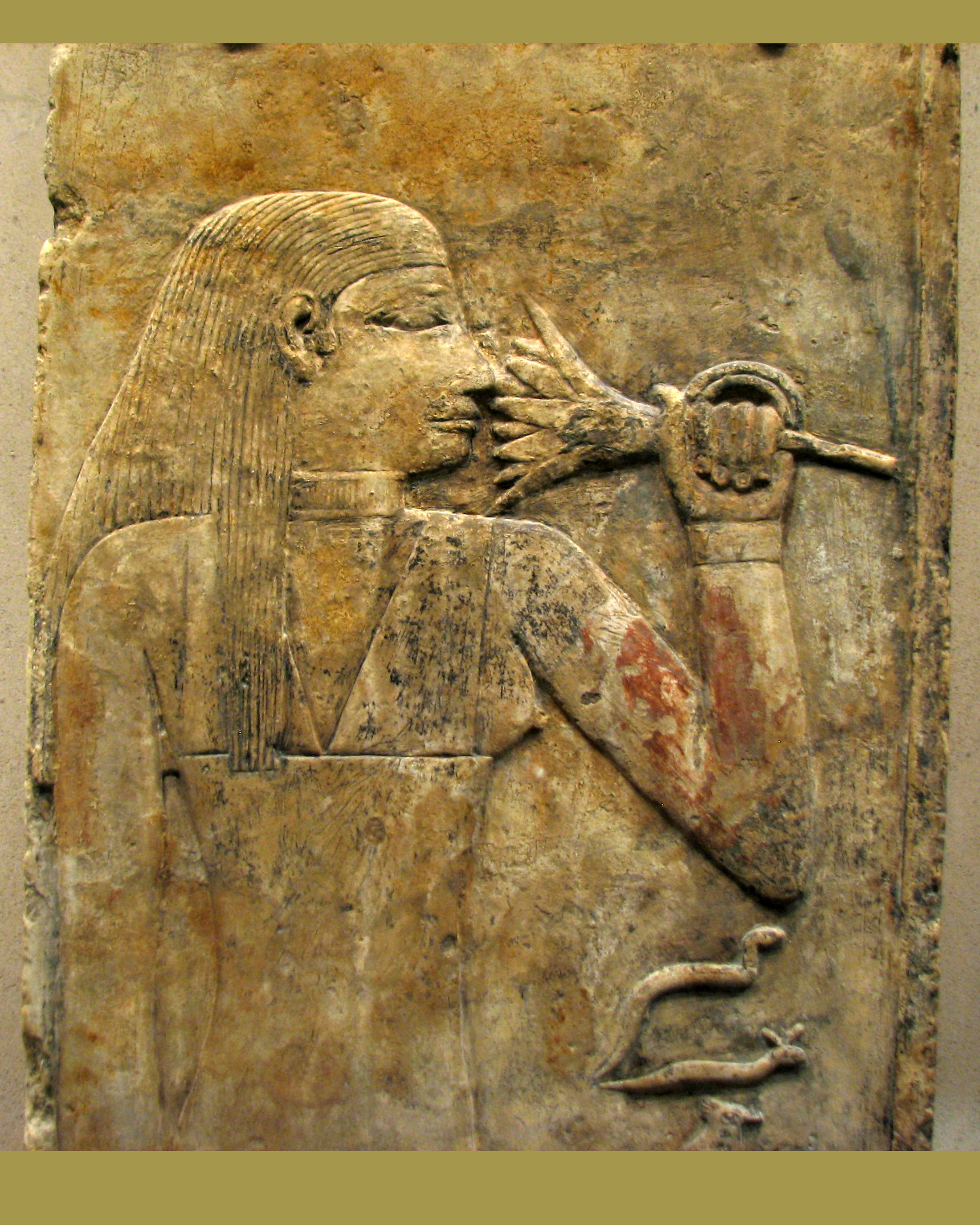
On the large, vertical block of relief, Niankhwadjet inhales the scent of a lily (aka 'lotus').
Elements from the False Door in the Chapel of Mery's Mastaba
First half of Dynasty 4 (2575-2520 B.C.)
From Saqqara, Limestone
I hope on a return trip to get a decent photo of this, meanwhile, here is one at Flicker)

Come 2012, and a return trip, I still fumbled the large view, but at least I have a decent detail!


